word of god – tref is on holiday # 13
Not expecting this one to rank on SEO btw 🙂
The resource requested could not be found on this server!
Liver of life, father of four, CTO of trefor.net, writer, poet, philosopherontap.com

Not expecting this one to rank on SEO btw 🙂

No Smoking – sign on motor boat on boating lake in Onchan Park
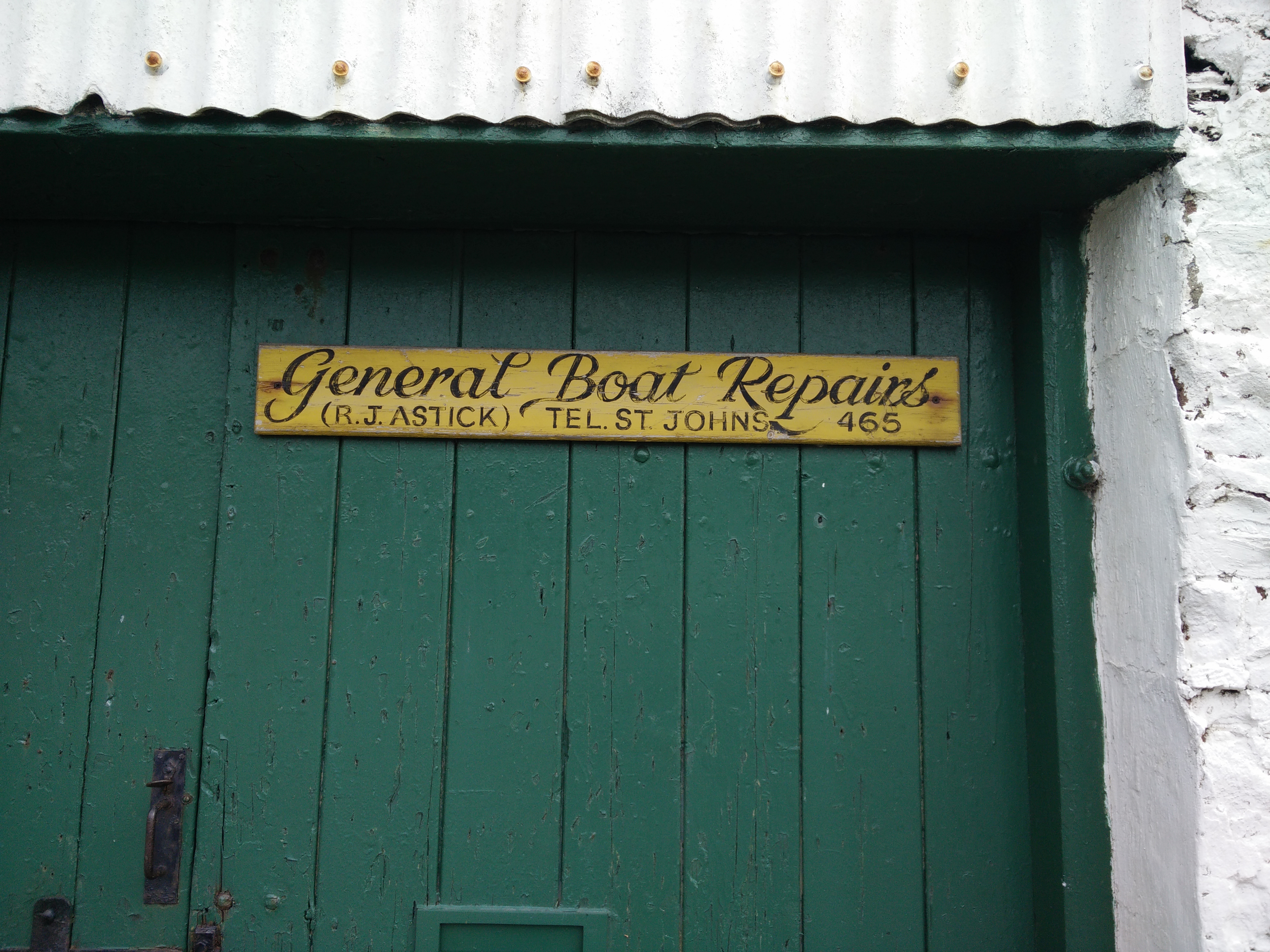
tref is on holiday # 11

Rowing boat next to Peel breakwater. Nice I thought.

Keep that beach clean – this is a pic from last week’s campervan surfin’ holiday in the Gower. Absolutely no mobile connectivity so a bit of a delay in posting.
Gonna buy a T2 bay btw – just need to find one.

Avast there me hearties


Reminiscent of Reggie Perrin but more likely left by a family who had walked the very long walk to the edge of the water on Rhossili beach




Faded sign at the sand dunes behind Rhossili points to beach clean. The beach was magnificent and largely cleaned by the elements. It’s the sand dunes that probably needed the occasional litter pick.

Brought to you by VW Campervan holidays. The Kings Head Llangennith, on the Gower peninsula.

Taken whilst sat around the fireplace the other night. Today the heavens opened and we set off for home a day early.



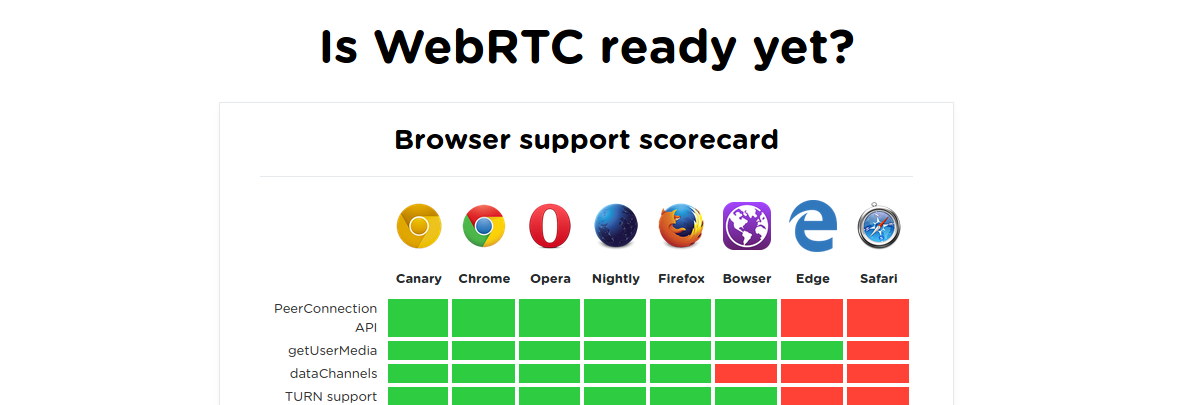

Neil Wilkinson was the author of “Next-Generation Networks: Technologies & Services” – for John Wiley and is the owner of Aeonvista Ltd (http://www.aeonvista.com/) . Aeonvista is an ICT Consultancy created by Neill in 2007 who look to maximize the best in class technology thinking to inform their customers. So generating strategic solutions that meet the needs of both large and the small organizations. He writes the final guest post in the GENBAND series on WebRTC.
Some years ago now I published a paper titled “SIP Based Call Centres – A vendor independent architecture for multimedia contact centres”. Thanks to the wonders of the Internet this can still be found at Recursovoip. The paper was based on a number of ideas I put forward in the John Wiley book in 2002, “Next Generation Networks – technologies and Strategies”. Subsequently in 2008, I expanded my ideas to encompass presence in the contact centre in the paper “The Ghost inside the machine”.
The paper discusses the use of automation using voice recognition and intelligent routing to provide front line integrated customer care in the form of a HelpBuddy – essentially a clickable “friend” in the contact list of an Instant Messenger client, like Skype or Google+ chat applications. The H☺lpBuddy™ represented the summary availability of agents in a multimedia contact centre, and even takes into account queue times and automated FAQ and IVR options.
To a degree, whilst the idea had solid foundations in SIP Presence and in 2008 the fledgling XMPP based presence protocols, realising this idea and extending it to the now familiar (or irritating depending on your mode) pop-up you find on website “Hi my name is Bob, may I help you today?” was difficult and required lots of custom code.
Roll forwards to 2015, and we now have much more of these kind of pop-ups and even products like Amazon’s Mayday have started to proliferate the web. WebRTC is now the most exciting capability for delivering real-time voice and video communications without the need for complex bespoke code, or dedicated applications. The promise of the “no plugin” enable multimedia communications H☺lpBuddy™ is finally realisable.
Let me re-think/re-word that last paragraph, especially the “need for complex bespoke code” part. Well it’s still somewhat complicated to deal with multi-platform multi-browser, and even different versions of the same browser family, as each has its own “versions” of APIs and ways of dealing with WebRTC based communications. Whilst standardisation is happening in the W3C, support across browsers is… hmm – well different – http://iswebrtcreadyyet.com/. The recent release of Windows 10 and its shiny new browser “Edge” has not exactly helped this picture.
So you’re probably wonder where I am going with this…. TaDah! – Kandy Platform standardisation for WebRTC. A common library of code, that makes it easier to create multimedia apps that will run in any browser and any device, and better still the ability to glue the SIP world in to realise my H☺lpBuddy™ dream. Now whilst there are other options for javascript libraries for example the aptly named WebRTC.org, and the ubiquitous SER (Kamailio, OpenSIPS), Freeswitch and Asterisk are nudging closer every day to WebRTC support, those helpful people at GENBAND keep all the hard work in dealing with those ever varying APIs hidden behind their libraries. WebRTC enables peer to peer communications directly between browsers (even behind that pesky NAT firewall), but in order to do that a web server is required to facilitate that initial rendezvous, the Kandy platform does all of that too.
So you now have some real choice when it comes implementing applications for the real-time web, Kandy provides a really nice set of features and “glue” to enable multimedia capabilities in Contact Centres, time to have a play with those Javascript libraries….. (https://developer.kandy.io/docs/js-sdk/js-sdk-2-3). Maybe it’s finally time to have a go at getting H☺lpBuddy™ off the drawing board.
Loads of posts on WebRTC in general on this site here.
Read the previous posts in this Genband sponsored WebRTC week:
The disruptive potential of WebRTC to communications networks by Greg Zweig
The role of the reseller in a software world by Chris Barley
WebRTC and Client Container Technology by Ralph Page
Another step forward for telecommunications for business by Peter Gradwell
WebRTC monetisation by Carlos Aragon



Beautiful sunshine
 Carlos Aragon, Senior Solutions Marketing Manager at GENBAND, asks ‘how might UC vendors and service providers profit from WebRTC’? Carlos has extensive experience with both mobile and fixed-line UC services, Unified Communications as a Service and WebRTC. Today, he is intimately involved in GENBAND’s Hosted UC offers to both service providers and enterprises.
Carlos Aragon, Senior Solutions Marketing Manager at GENBAND, asks ‘how might UC vendors and service providers profit from WebRTC’? Carlos has extensive experience with both mobile and fixed-line UC services, Unified Communications as a Service and WebRTC. Today, he is intimately involved in GENBAND’s Hosted UC offers to both service providers and enterprises.
Last week, I fielded an interesting question on WebRTC.
“If WebRTC is an Open Source technology, how can companies like yours profit from it?”
While I provided a fast answer to the customer (time is crucial when dealing with customers), I believe this topic is worthy of further discussion. Firstly, we need to clear up some misconceptions.
Open source software is not always free
There are still people out there that have this equation locked into their brains:
Open Source = Free
And it is partly true, just partly. First, not all open source is free, it depends on the license that you get with it. For example, there are open source projects that are free for personal or educational use but when you want to use it commercially you have to open your wallet.
Even if the software itself is free e.g. Linux or Asterisk, there are still ways for individuals and companies to profit from it: training, installation, operation, maintenance, professional services… The list of profitable options is quite large.
In the case of WebRTC in particular, the technology behind it is not totally open source. Yes, the HTML5, Javascript and CSS3 technologies that constitute the basis of WebRTC are free. The codecs, however, are a different story, not all were free until recently.
H.264 is a royalty bearing codec and there was some friction with it because an open project like WebRTC could not use a for-profit codec. VP8 was proposed but its lack of hardware acceleration on mobile devices was a serious handicap. In the end, WebRTC made both codecs mandatory thanks to someone else taking the royalty tab (in this case Cisco via their browser plugin).
So now that WebRTC is truly free, and ignoring for now the training, consulting and professional services opportunities, there are still other ways for companies like mine to make money.
The do-not-throw-that-away factor
Contrary to what companies try to force on consumers – that everything has an expiration date and we are supposed to discard old products and embrace the latest novelty – when it comes to their infrastructure and assets they want to make them last as long as possible.
Sometimes the motivation is their own amortization schedules, other times it is because of their existing customers and this is particularly true for Communications Service Providers (CSP). Customers that are happy with a service or a device take a long time to accept a new technology (especially if the user experience changes and it means they have to learn how to use it).
If everyone exclusively used a WebRTC browser (like Chrome, Firefox, Opera) all the time, it would be feasible to have every person in the world communicating using pure WebRTC and most CSPs would go out of business or relegate themselves to the role of a broadband pipe provider. Reality however is somewhat different. Almost everyone out there has a phone, whether it is mobile, fixed or attached to a business PBX and these phones are not going to disappear anytime soon.
There needs to be a connection between that legacy phone world and the new web world and that is where companies like GENBAND are leading the way in WebRTC. We were the pioneers in launching a WebRTC Federation Gateway that provides the interworking (signalling and media) between the traditional CSP networks and the WebRTC browsers. CSPs are willing to pay someone a little money to preserve their larger investments while, at the same time, enable their networks to find new revenue streams facilitated by WebRTC.
And if that WebRTC Federation Gateway also brings SDKs for iOS, Android and Javascript to allow the developers to save time interconnecting to the CSP’s network, then you have another community that will be willing to pay a reasonable fee.
But not everyone wants to build applications or maybe they don’t have the skills for it. In that case, there are companies such as SAP or IBM and other specialist developers that will be happy to build the WebRTC applications for a cost.
And if someone wants to build an application that benefits from WebRTC, how will they interconnect it to the telephone network? What if they are a small developer? In this case, it is better to get a platform-as-a-service solution such as Kandy that allows them to access and use the real time communications features that they need for an affordable cost.
So where’s the webrtc monetisation?
WebRTC is a new frontier where there is a lot of land ready for the taking, and whoever comes first and does a good job building a brand, a reputation and a good service and product portfolio will harvest the fruits. Here is a summary of the areas related to WebRTC where profit can be found:
These are the ways I could think of. If you have any more, or you don’t agree with these. I would definitely like to hear about it in the comments.
Try out WebRTC for yourself… GENBAND KANDY is a real-time communications Platform-as-a-Service that provides access to voice, video, rich-messaging and collaboration services using WebRTC as an enabling technology. Developers can sign up to KANDY and start using their free accounts to run Quick-Start tutorials before integrating into their own applications. ITSPA UK members can enter their KANDY applications and ideas into the GENBAND UK Summer of Apps competition. http://www.trefor.net/events/webrtc-apps-competition/
Read my previous post on WebRTC monetisation on trefor.net. Loads of posts on WebRTC in general on this site here.
Read the previous posts in this Genband sponsored WebRTC week:
The disruptive potential of WebRTC to communications networks by Greg Zweig
The role of the reseller in a software world by Chris Barley
WebRTC and Client Container Technology by Ralph Page
Another step forward for telecommunications for business by Peter Gradwell

Had some great feedback on the 1st trefor.net Tech Marketing lunch that took place last month. Despite the tube strike we had almost 100% attendance and a very useful session.
Thought if anyone was interested in coming along to the next one which is entitled “Building communities of interest” you might like to see some of this feedback:
Kate Stolworthy, Marketing Exec, Provu Communications
“Great afternoon meeting marketing minds within the VoIP channel. There was plenty of useful advice and the chance to share thoughts and ideas.”
Wayne Mills-Kiddals, Head of Voice Services, Metronet
“Attendance at these events is invaluable, Tref is someone who knows the industry inside out and brings a wealth of knowledge to the table along with like minded people from the industry. Great way of networking and well worth the money.”
Karen Adams, Director, Express Telephony
“I found the trefor.net Tech Marketing lunch to be a really great use of my time and has given me plenty to think about in terms of what to do with our own business”
More details on the next tech marketing lunch can be found on the events page here. We have in Helen Jeffrey great guest speaker who you will find extremely engaging and have invaluable insights into the world of building communities using social media.
trefor.net also produces Executive dinners. These are occasions where C Level individuals from the internet communications world get together to discuss issues of import to our industry. if you want to hear more about these dinner please do get in touch. You can do so by leaving a comment on this post – it won’t be published.
trefor.net tech marketing lunches – makes sense for your business for you to attend.

 In the fourth of our WebRTC articles this week Peter Gradwell , Founder of Gradwell Communications, explores the buzz surrounding WebRTC and what it means to small business. Peter started Gradwell Communications because he couldn’t find the communication technology he needed for his own business, so he developed it. Gradwell has grown year-on-year, now handling communication services for nearly 22,000 small business customers. Peter is a founding member of the Internet Telephony Service Providers Association and has served on industry advisory boards and has lobbied domain policy and VoIP regulations.
In the fourth of our WebRTC articles this week Peter Gradwell , Founder of Gradwell Communications, explores the buzz surrounding WebRTC and what it means to small business. Peter started Gradwell Communications because he couldn’t find the communication technology he needed for his own business, so he developed it. Gradwell has grown year-on-year, now handling communication services for nearly 22,000 small business customers. Peter is a founding member of the Internet Telephony Service Providers Association and has served on industry advisory boards and has lobbied domain policy and VoIP regulations.
Nowadays it is more and more common to see SMBs adopting new communication technologies. From feature-rich hosted VoIP services (like those provided by GENBAND NUViA), to the latest in Cloud tech, more than ever SMB’s are looking for a competitive edge over their larger counterparts. And whilst in this field we can find innumerable combinations and products, many customers just want a basic PBX seat at a reasonable price.
Therefore, for those customers looking for a straightforward, no nonsense communication over IP service, I am happy to give praise for WebRTC. Which gives an open framework for the web that enables Real Time Communications through the browser. It takes into account the fundamental building blocks for high quality communications on the web such as network, audio and video components used in voice and video chat applications; thus allowing a really different sales pitch into the SMB market through bespoke IT integration.
So, as a small business, which are the main benefits that I gain from adopting WebRTC?
Combining all the functionalities already listed and an open and free project that is supported by companies like Google and Mozilla; one can see why there is such a buzz surrounding WebRTC. Just another example of how the evolution of the internet never takes a break.
Loads of posts on WebRTC in general on this site here.
Read the previous posts in this Genband sponsored WebRTC week:
The disruptive potential of WebRTC to communications networks by Greg Zweig
The role of the reseller in a software world by Chris Barley
WebRTC and Client Container Technology by Ralph Page
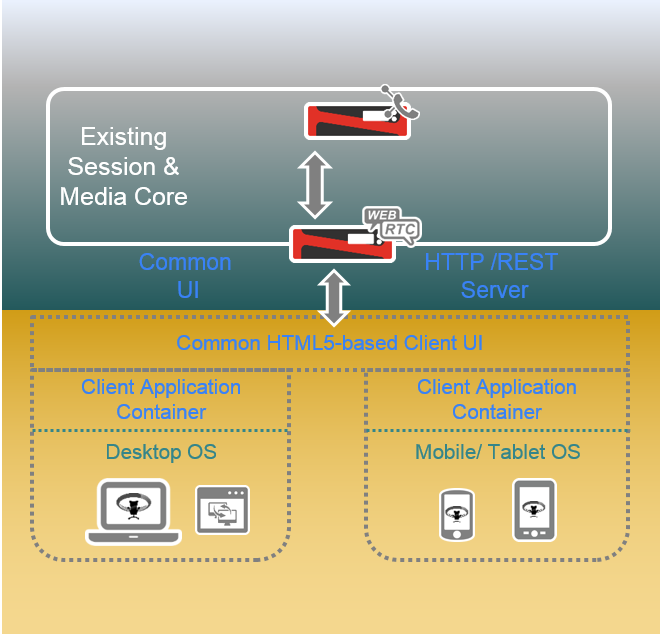
 In the third of our WebRTC articles this week, Ralph Page, Strategic Solutions Director at GENBAND, looks at the emergence of client container technology.
In the third of our WebRTC articles this week, Ralph Page, Strategic Solutions Director at GENBAND, looks at the emergence of client container technology.
We’ve seen an explosion in Unified Communications solutions, each bringing their own ecosystem of apps to match a bevy of new devices. This hyper connectivity stampede means that a Service Provider launching a Unified Communications service needs to offer clients for PC, Mac, tablets(i.e. iPad & Android), phones (i.e. iPhone & Android) and Web browsers. Each of these clients’ needs to be kept up-to-date, driven by changes from both device vendors and operating system providers.
Further, some customers want custom-branded clients; each of these also has to be touched each time the base client is updated. Ultimately, Service Providers finds themselves upgrading at least one of their UC clients every quarter and potentially touching every customer that has a custom branded variant.
UC clients are particularly susceptible to OS and device changes because their very existence is tied to unifying multiple services and leveraging multiple device functions (speaker, mic, location, etc.). Not to mention that real time services don’t respond well to performance issues from lagging operating systems or apps.
In theory, simple WebRTC browser-based clients should be a cost-effective alternative. Using a browser means that changes are centralized in a web server. Web developers can customise features or deliver customised branding to individual enterprises using HTML5. No need for multiple apps and app store issues.
However, native WebRTC browser based clients, especially in mobile devices, have limitations. First and foremost, some devices don’t support WebRTC compliant browsers. More importantly, many mobile devices don’t give the browser access to push notifications services or allow access to contact lists or leverage battery-saving techniques.
Recently a new concept has emerged that leverages WebRTC and HTML5 but offers access to the best bits of the device’s operating system for push notifications, on-screen pop ups or the ability to start-up when the device starts. Unlike a simple browser, this new model uses a client container to dupe the device operating system into thinking it is a full application. However, the container itself runs its own browser so it can display the HTML5 content and deliver WebRTC services.
At GENBAND we’re very excited by the container concept and are embracing the model for all of our next generation Smart Office UC clients. See more at: http://www.genband.com/genband-perspectives/new-omni-client-technology-will-heat-unified-communications#sthash.9RRl3K45.pdf
Try out WebRTC for yourself… GENBAND KANDY is a real-time communications Platform-as-a-Service that provides access to voice, video, rich-messaging and collaboration services using WebRTC as an enabling technology. Developers can sign up to KANDY and start using their free accounts to run Quick-Start tutorials before integrating into their own applications. ITSPA UK members can enter their KANDY applications and ideas into the GENBAND UK Summer of Apps competition. http://www.trefor.net/events/webrtc-apps-competition/
Loads of posts on WebRTC in general on this site here.
Read the previous posts in this Genband sponsored WebRTC week:
The disruptive potential of WebRTC to communications networks by Greg Zweig
The role of the reseller in a software world by Chris Barley
 In the second of our WebRTC articles this week, Chris Barley asks ‘what might the comms reseller look like in a software world’? Chris has spent too many years in telecoms, starting out in business development in the early days at NTL, where he was responsible for satellite services and data network roll out, followed by a product manager role at LCR service provider ACC Telecom, where he was responsible for Intelligent Network and broadband services. More recently Chris worked at iHub, heading up product and network roll out for hosted voice services.
In the second of our WebRTC articles this week, Chris Barley asks ‘what might the comms reseller look like in a software world’? Chris has spent too many years in telecoms, starting out in business development in the early days at NTL, where he was responsible for satellite services and data network roll out, followed by a product manager role at LCR service provider ACC Telecom, where he was responsible for Intelligent Network and broadband services. More recently Chris worked at iHub, heading up product and network roll out for hosted voice services.
With the role of software becoming more dominant as a disrupter in many industries, it is interesting to look at what the potential affects of software development could be on the communications world.
A recent poll revealed that 80% of Fortune 500 Company CEOs were concerned that their businesses would face a serious threat from the tech sector in the next 10 years. This is due to many large corporates trying to keep competitive by applying sticky plaster to their legacy business models, only to see new software companies solving the same problem at a fraction of the time and cost.
So what does this mean for communications? Curiously for a tech segment, it could be argued that the comms industry has not been very adventurous when it comes to product innovation. A business requiring voice comms is sometimes offered a hosted service, but it is equally likely that a bit of hardware will be installed with traditional black phones placed on the desk, a solution that has stood reasonably still over the last 20 or so years.
In the case of the traditional PBX and phone installation, the infrastructure, telco lines, central office switches, proprietary software etc, dictated what the solution looked like – which was pretty much the same for every customer, be the user a banker or a builder. Just as importantly, installers and maintainers were required to look after all the equipment, adding significantly to the solution’s cost and complexity. The result? Expensive network equipment that provided a fixed solution, supplied through layers of resellers and providers at a high cost necessary to support all the elements in the chain.
The situation has improved with the move to hosted services, with providers offering cloud PBX services to business customers. Whilst the model has been reasonably successful, most observers would however say that it has not reached the rate of penetration that some expected. Unfortunately there are still too many layers of cost in equipment infrastructure and support services that make the hosting model too expensive for rapid penetration in the business market.
But now two things are happening that are changing the future shape of the market – costs are coming down and customers are getting more demanding.
In the comms world as we know, there is no need for expensive telecoms infrastructure to make and receive a phone call. Services are being transferred from circuit switched to IP networks, and as bandwidth speeds and codec efficiencies increase, many voice services will move completely to the internet, where the majority of customers will accept a few quality problems for a free service. Indeed the demand from the younger generation workforce for voice comms has and will continue to decrease, with messaging and video chat rising in importance as their use moves from social to business networks.
At the same time software in most industries is driving business change at a much faster rate, and this is a big challenge for companies that want to remain competitive. Now businesses are moving from large, inflexible, fixed work environments, to more mobile groups of cross functional teams, consisting of knowledge workers that now need to respond more rapidly to market changes.
With the advent of webRTC, it is now likely that web based applications that have changed so many other industry segments will now have a similar effect on the comms world. Now that everyone is speaking the same language, there are substantial opportunities for new operators to take on the existing business model. With a pure software model there is minimal equipment required to provide services. Rather than developing their own full stack, service providers (SPs) such as Veyring can easily just use the APIs from traditional vendors and opensource providers to build services with a wide range of features at a fraction of the cost. In addition the requirement for network and telephony engineers is reduced.
And as these are all services distributed via the web, there will be no requirement for a traditional reseller to install and maintain the service, indeed the end user will be able to buy these solutions directly from the SP, who has packaged the service using APIs from the software vendors themselves. So whereas previously there may have been 5 layers in distributing a service to the end user (vendor – carrier – wholesaler – reseller – end user) increasing there will now only be 3 (vendor – service provider – end user).
This more streamlined and efficient model will result in a dramatically reduced cost base and less inertia in the sign up and onboarding stages. This has the advantage of enabling the freemium business model, where the lower cost base allows the introduction of free services (for a basic product package) that incentivises use and initiates the viral spread of the service. As sign up is a much more frictionless process than installation of traditional services, rapid scale can be achieved. This is important as this engine of growth can be much more cost effective and rapid than off line marketing methods used for the traditional comms solution.
The freemium model works when a certain percentage of users upgrade to the paid service and create a healthy revenue stream for the business. This upsell will be the acid test of a successful service provider, since common freemium take up rates are commonly less than 5%. However applications such as the messaging service Slack, with a paid service take up of in excess of 30%, illustrate what can be achieved with a well designed service that meets the needs of the customer.
A paid service needs to demonstrate real value add for the business user. The key to this value add is likely to be the move to cloud based business applications for many functions and processes, and the expectation that comms will be an integrated element allowing users to complete tasks seamlessly within the same app. Previously this would have required an expensive CTi solution, but now most web based business apps publish APIs that make integration with a comms solution considerably easier and less expensive.
Therefore the SP of the future will not need to focus on providing lines, network, and hardware, but will instead need to differentiate by adding value through developing features that will be relevant to the specific company or industry. This will involve developing new skills around understanding a customer’s business challenges and building product to solve these problems.
These new SPs may originate from web developers and internet companies that understand their customers and see the opportunity to comms enable core business applications and private intranets. Alternatively, it will be interesting to see from the comms sector which resellers embrace this change and are successful in a software dominated market.
Try out WebRTC for yourself… GENBAND KANDY is a real-time communications Platform-as-a-Service that provides access to voice, video, rich-messaging and collaboration services using WebRTC as an enabling technology. Developers can sign up to KANDY and start using their free accounts to run Quick-Start tutorials before integrating into their own applications. ITSPA UK members can enter their KANDY applications and ideas into the GENBAND UK Summer of Apps competition. http://www.trefor.net/events/webrtc-apps-competition/
Loads of posts on WebRTC in general on this site here.
Read the previous post in this Genband sponsored WebRTC week:
The disruptive potential of WebRTC to communications networks by Greg Zweig

Needs no introduction really but if you were one of the global audience that saw the original broadbandrating pig racing video you will know that a GoPro camera was strapped to the back of one of the pigs as part of the filming. GoPro pigs!
Well this is that pure GoPro footage – you occasionally get a glimpse of one of our cameramen tracking the pigs as they raced around the course.
That original vid had around 11,000 views in its first week online – mostly on Facebook. The YouTube version had far fewer.
See the original video over on broadbandrating here.

 This is the first of our WebRTC articles this week, Greg Zweig, Director of Solutions Marketing at GENBAND, introduces WebRTC and suggests that its solid engineering and developer-accessibility has the potential to disrupt how we communicate today.
This is the first of our WebRTC articles this week, Greg Zweig, Director of Solutions Marketing at GENBAND, introduces WebRTC and suggests that its solid engineering and developer-accessibility has the potential to disrupt how we communicate today.
Until fifteen years ago communications networks were primarily built on predictable and reliable circuit-switched networks. In the late 1990s Voice over IP (VoIP) started making inroads as it allowed service providers to better leverage the massive investments they were making in data networks; they could simply add voice as another application. It’s easy to see their logic, why keep building two networks when they could invest in one and use it for multiple services? In the end, the basic math couldn’t be denied, VoIP won. However, it’s important to appreciate that the pace of change is slow and that even today, the majority of voice services are still circuit switched.
VoIP has gained the most ground in new network builds such as fibre to the home and cable television. More recently VoIP is being used in mobile networks that have adopted 4G. Service providers learned quickly that there is a big difference between making one VoIP phone call that connects quickly and sounds fine and creating a network that consistently supports tens of thousands of calls. Not surprisingly, as a VoIP call traverses more networks and touches more devices the opportunity for issues grow. Service providers quickly found that customers were far more accepting of VoIP when it was deployed in a more predictable network environment with a well understood set of endpoints.
The explosion in Internet access and IP-connected devices have made it more and more impractical to try to limit endpoint choices or potential connectivity paths. The trade-off for greater flexibility assures occasional issues with disparate audio and video devices, variations in OS or hardware platforms, local network or Internet access limitations as well as issues with intermediary elements like NAT or firewalls or VPN. Additionally, basic issues such as blocked media stream routes between the devices or incompatibilities with the media encoding are still common.

Certainly, all of these issues can be solved. If you’re a massive global cloud service provider looking at providing “freemium” voice and video services to complement your application suite then you could roll up your sleeves and start building some great end-user software apps that solve many of the client related problems. In fact, maintaining a walled garden for the user community is just another way of streamlining variables to manage quality. Deploying Session Border Controllers (SBCs) can ease firewall and NAT issues and in theory the SBC could encrypt every call. Unfortunately, many of these answers may be fine for a walled garden but they don’t actually encourage extemporaneous communication. They may be cost-effective for narrowband voice access with a low peer-to-peer call ratio but they don’t necessarily scale for mass-market peer-to-peer HD voice and video. And, the reality is that encryption is rarely applied while lowly narrowband G.711, not HD, often prevails.
A more radical approach was taken when WebRTC emerged. Initially driven by Google, WebRTC specifies how two endpoints on the internet can securely, reliably and cost-effectively establish a session to exchange real-time voice, video and data. Today it is natively implemented in Chrome, Firefox and Opera browsers and is made available through a JavaScript API that an average web developer should be able to understand.
WebRTC defines internet tolerant and royalty free-codecs to promote an interoperable high definition experience. It mandates security for media flows between peers to ensure security is not an option but is also not difficult to implement. It leverages ICE to be facilitate peer-to-peer connections where possible, dealing with NATs and minimising usage of media relay servers. Media can even be configured to run on TCP port 443 (common HTTPS port) so that it busts through firewalls often found in corporate or guest WiFi networks.
WebRTC implementation in the browsers abstract the details of the OS and the platform, manage audio/video input devices and provide things like echo cancellation (it is a joy to simply “talk-at” your laptop built-in speaker/mic/camera and not fuss with USB headsets).
WebRTC does not however specify what it should be used for or how two [or more] parties should locate each other and exchange connectivity information. The common expectation is that this will be done using well understood web client-server protocols (secure, reliable, firewall tolerant and supported by web browsers) and will be considered as part of other user identification and communication flows already provided by the web application.
The network engineering and developer-accessibility of WebRTC catalyse the integration of real-time communications into web applications. Web applications today usually operate at a tangent to the communications network with users pivoting between them to meet their objectives.
With WebRTC, the expectation is that communications will become an embedded part of the application. Where we have an ability for a buyer to send a message to a seller on an e-commerce website, this can be extended with WebRTC to provide real-time voice and video.
The fact that users do not need to install software on their machines means that you can build services which are only used occasionally. The ease of application development means that you can build services that might serve a very specific niche of users. The royalty free clients, preference for peer-to-peer media and attention to security means that you can build services that might serve a global user base of millions of users.
Stepping down from the hype, there are still things that need to be worked – not least the place that WebRTC has on mobile devices. You can run a WebRTC app in a compatible browser on a compatible smart-phone but it might not be how users actually want to use your application (they use an installed “app”) and you may be restricted in user experience because browser applications can’t receive notifications or access the device address book.
It is also not quite as easy as you’d like to get started… there is still some generic “state machine” requirements to deal with for the WebRTC implementation, its use of ICE and the co-ordination between the two parties. And, there is still some wrinkles between different WebRTC engines in browsers or apps.
We’ll deal with these points in a subsequent article but we should also see that there is sufficient positives with WebRTC and industry momentum that there is no excuse for not getting started with the technology. It is quite simple to dip your toe into the WebRTC water and see how it might change your application or relationship with your customers.
Try out WebRTC for yourself… GENBAND KANDY is a real-time communications Platform-as-a-Service that provides access to voice, video, rich-messaging and collaboration services using WebRTC as an enabling technology. Developers can sign up to KANDY and start using their free accounts to run Quick-Start tutorials before integrating into their own applications. ITSPA UK members can enter their KANDY applications and ideas into the GENBAND UK Summer of Apps competition. http://www.trefor.net/events/webrtc-apps-competition/
Loads of posts on WebRTC in general on this site here.
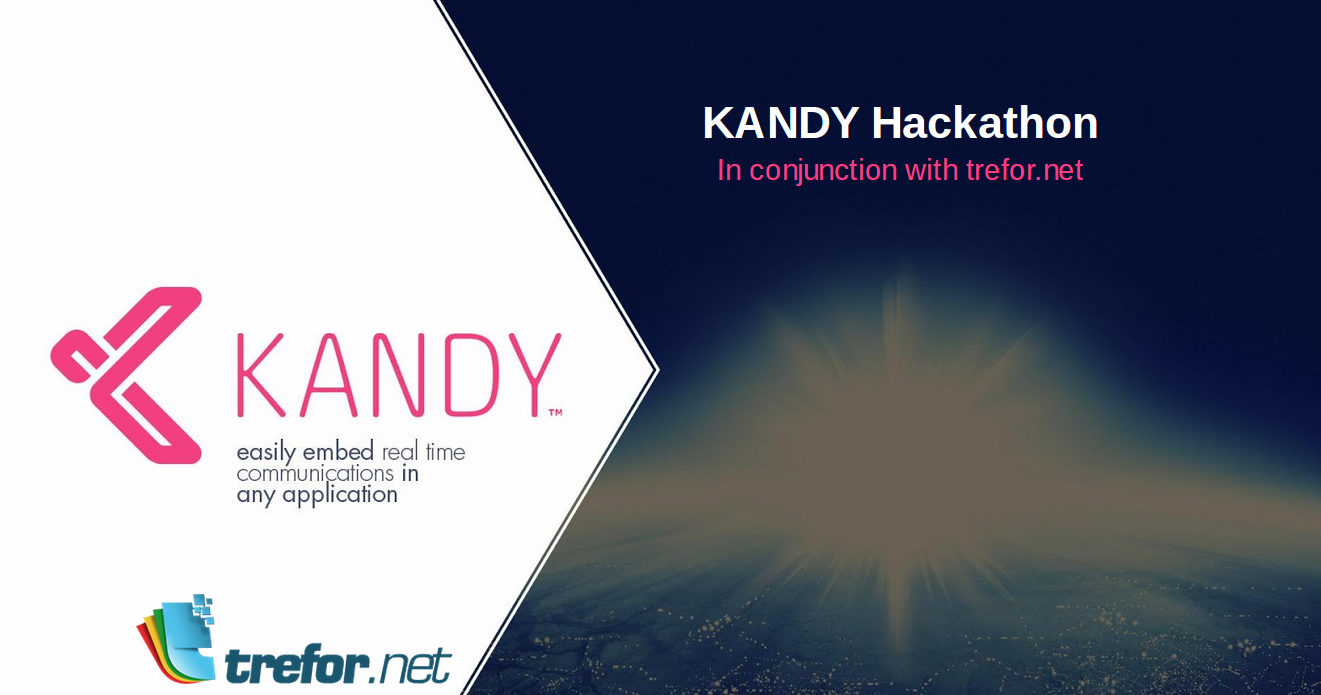
Once more it’s WebRTC week on trefor.net. The last time we did this the week was very kindly sponsored by our good friends at ipcortex. Their CEO Rob Pickering assembled a great collection of guest posts on the subject which were very widely shared.
This week’s posts are sponsored by global voice infrastructure player GENBAND. I have worked with GENBAND for the past 10 years. The business, formerly the Nortel carrier division, has come through a difficult time in the telecoms world and has emerged as a very strong player.
This summer I am running a WebRTC Summer of Apps competition based on the GENBAND Kandy platform – register your interest here.
That GENBAND also sponsor this week of WebRTC posts is therefore quite appropriate. The guys at GENBAND have put a lot of effort into sourcing some very interesting pieces which I’m sure you will enjoy. We have great posts going out every day at 1pm.
Note the posts published during these sponsored weeks are not allowed to be sales pitches. However the theme is usually something from a field in which the sponsor may be considered to be an expert. Don’t be surprised then if posts sometimes refer to work/products/solutions owned by the sponsor.
Enjoy.

The 2015 Ashes tour has come to Trent Bridge, my nearest test ground. I go every year with the lads. Ground capacity being what it is not everyone can go and indeed some prefer to stay at home and watch it on the telly. However when you do that you don’t get the atmosphere. Here’s some of that atmosphere:
I’m not going to attempt to cover the cricket. You can tap into a match report from any of the mainstream sources – here’s the Beeb.
What the press doesn’t cover is the nature of the fans’ day out. This is, to a greater or lesser extent, pretty ubiquitous unless you are taking the kids along in which case it is an alcohol free day out travelling by car.

08.10 meet lads outside Lincoln Central Station. Hand out match tickets in exchange for £75 in used notes each. Very conscious about carrying so much cash but hey. Purchase day return to Nottinham, large tea from caff and mosey over to platform 4 to get on train which is waiting for us. Good job we got there earlyish (08.35 dep) as the train fills up very quickly. I recognise some faces from the Lindum Cricket Club.
09.30 arr Nottingham on a train which is by now crammed with cricket supporters – squeezed into the aisle. Taxi to ground for a fiver. It is very walkable but we have a table reserved at The Southbank Bar, owned by a mate of Ashley’s.
09.35 we order 4 “Big Ones” and 4 pints of Peroni.
I’ve already described the general pace of the rest of the day here. There are a few auxiliary notes relevant to this particular day out.
10.30 pay up and nip over the road to the ground. Huge queue if you have a bag but 3 out of 4 of us are bag free. Ajax has a bag that contains cheese, pork pies, coronation chicken sandwiches, 4 plastic glasses and a 3 litre box of Banrock Station Australian (appropriately) red wine. We worry about Ajax because they don’t allow you to bring drink in to the ground. Ajax succeeds in smuggling it in. The box was hidden at the bottom of the bag.
10.45 we establish a kitty and purchase 4 pints of lager at the bar before settling into our seats.
The one thing I particularly noticed about yesterday at Trent Bridge was the hugely partisan nature of the crowd. We have to remember this is Australia we are playing. They give no quarter themselves and are famous for their sledging (look it up). So when we get the opportunity to give some back they get it back by the tankerful.
The Australian captain Michael Clarke is under huge pressure because his team hasn’t been performing and his own person performance has been very much under par. As he came out to bat the merciless crowd sang “You’ll be sacked in the morning” to the tune of Guantanamera. We also sang it as he trudged a lonely path back to the pavilion after scoring 13 runs.
Immense psychological pressure. That guy had almost the whole ground sticking the knife in and twisting it, foot on the throat (etc).
We had a great day which was only very slightly tempered by the fact that bad light stopped us from finishing it off last night.
I’ll leave you with Stuart Broad (I think) bowling at someone.
The end.

Hi all. I’ve learned from the example of B4RDS (fast broadband for Rural Devon and Somerset –https://www.facebook.com/groups/fast.rural.broadband/) ) and decided it would be a good thing to have B4RL as a focal point for people to discuss issues they may have with getting superfast broadband to their homes and businesses.
I have initially invited people to the group who I know to be involved with rural broadband issues elsewhere. They have their own issues to sort so I’m not expecting them to become active members. We need to find our own voice in Lincolnshire.
However they are there on the off chance that people living in Lincolnshire may well be able to benefit from the experience of others elsewhere in the the country.
The BT/BDUK rollout of superfast broadband is progressing but it isn’t going to cover everyone.
There is also a cohort of individuals who think that superfast or fibre broadband (as it has been dubbed by marketeers) isn’t the right solution. Fibre broadband is not fibre all the way to your home but to the green cabinet down the street. Should we be going straight for Fibre to the Premises as in the case of B4RN in Lancashire (see http://b4rn.org.uk/) .
FTTP doesn’t necessarily cost out for big businesses like BT so what’s the alternative?
This group is going to be the place for people interested in high speed broadband in Lincolnshire to air their views and is open to anyone to join.
The group url is here. Feel free to sign up. The more the merrier.
PS this is not a knock the incumbent group – we want constructive useful dialogue.
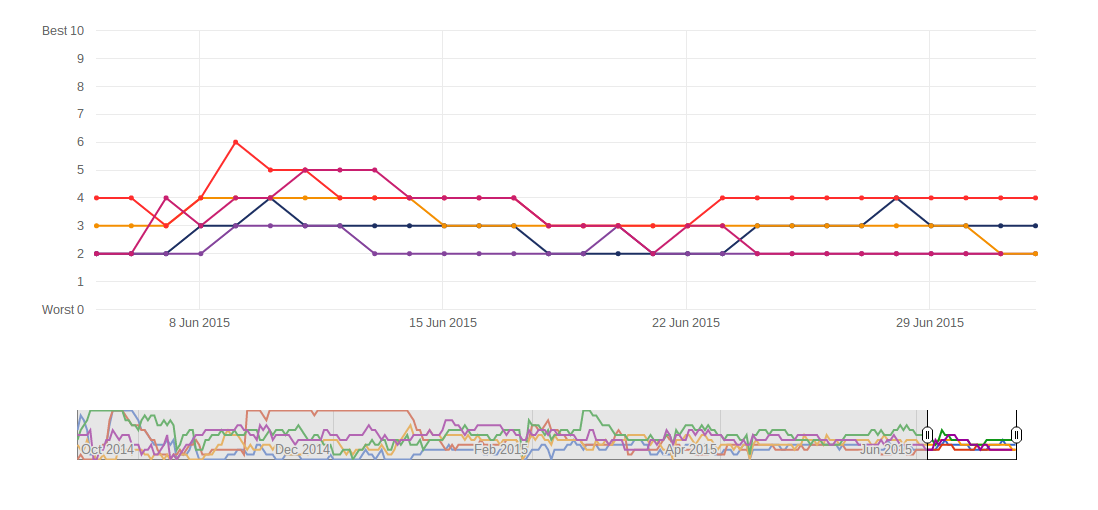
I’ve ditched sentiment analysis as a metric on the broadbandrating.com website. The idea that we might be able to rate broadband providers according to social media sentiment was a good one but in reality most people commenting on their broadband provider were slagging them off (to use the venacular). Most positive vibes were being generated by positive marketing initiatives by the ISPs themselves, and then mostly by TalkTalk who seemed to be extensive users of Twitter. Nothing generally to do with customers unilaterally praising their ISP.
It is interesting to see sentiment analysis creeping in to more and more places in our lives (ish). During the general election it was being used to gauge how parties were doing. In fact for it to be anything other than random guesswork we found that the results needed to be 100% human generated.
In other words we couldn’t leave it to a computer to decide whether a tweet was praising or condemning an ISP. The English language has too much scope for misunderstanding. In theory this manual activity could be outsourced to somewhere with low cost labour but then that ran the risk came with a very high probability of it being done by someone whose first language was not English and who would therefore be facing some of the problems of the computer in identifying the tone of a tweet.
We bore the cost of getting this work done in the UK for some months but in the end decided the feature wasn’t worth it. It was an interesting experiment.
In the meantime we still have the Customer Service metric – how long it takes an ISP to answer the phone and where their call centres are typically based (ie UK or India). We will also no doubt introduce others but in the meantime are concentrating on pure marketing activities such as the pig racing and the bulletproof broadband videos (both also featured on this site if you’re interested).
So there ya go. The sentiment analysis experiment was an interesting toy but in the end didn’t cut it. You have to move on.